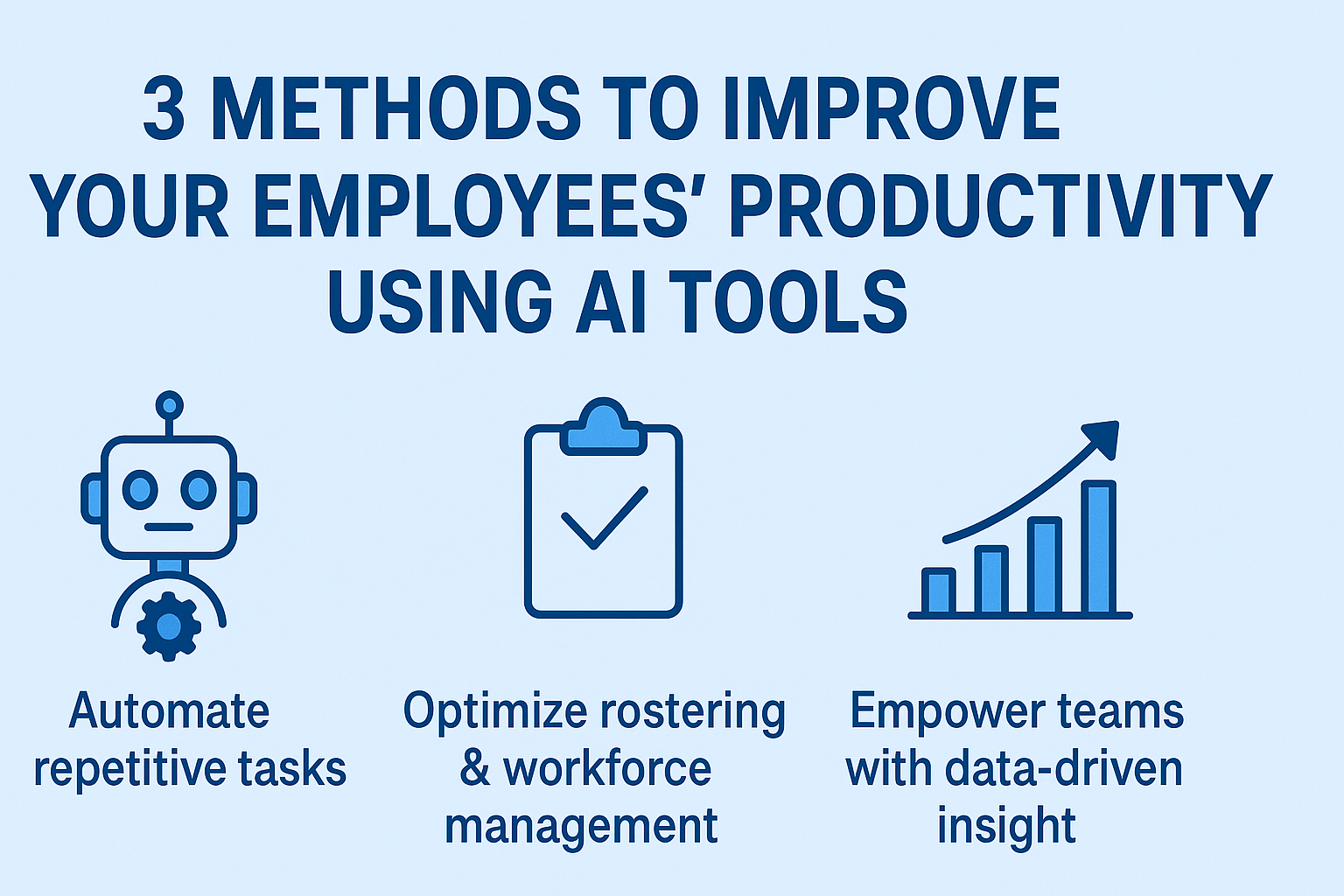In times past, productivity was viewed as a result of hard work, but now we know better. These days, it’s all about working smarter, and this is where AI tools excel. From eliminating inefficiencies to empowering to facilitating intelligent strategies, artificial intelligence can do a lot to help you boost the productivity of your employees. Here, we’ll discuss three key ways that you can leverage it to maximize their output.
1. Automate repetitive tasks
When it comes to leveraging AI for productivity, the first port of call is automation. A common misconception about automation is that its primary use is to replace workers, but in truth, it actually excels at empowering them, and it can do so in a wide variety of ways.
Think about your teams’ responsibilities and consider where they typically experience dips in their output. The majority of bottlenecks occur due to admin and repetitive processes like data entry and project management, right? Sure, these tasks may be necessary, but the reality is that they vastly underutilize the skillsets of your employees, which means that you are losing out in terms of the value they can deliver. AI can solve this issue to a large extent through workflow automation.
AI-powered workflow automation tools can be used to automatically collect and route data to relevant internal systems. These tools can complete forms and relay updates through notifications, eliminating the need for members of staff to go through the repetitive steps involved in such standard processes. This can allow them to focus on tasks that can maximize their skill utilization.
Another good example of automation in use is the implementation of chatbots. One use case might be in customer service. As chatbots can handle routine questions, they can create space for human reps to deal with more complex issues, which allows for a better quality of service.
Likewise, HR chatbots can be used internally. They can automatically process basic queries, for instance, to reduce wait times and maximize what support personnel can do with their time. AI agents like Connecteam AI can be implemented to help employees quickly find resources like manuals when they need them, without needing to wait for assistance. This boosts productivity for both IT and HR, but also for the departments that rely on them.
2. Optimize rostering & workforce management
Resource allocation represents another of the main challenges to productivity. Even if employees themselves are organized and well-motivated, their output can suffer if they are operating within a structure that is improperly balanced.
Suboptimal scheduling and management of personnel can result in uneven workloads, idle time, and poor skill distribution, which affects balance and cohesion on shifts and limits the ability of employees to perform to their fullest potential. It’s an issue that is common for organisations with growing workforces, but fortunately, it is also quite straightforward to address with the right AI tools.
AI scheduling and workforce management platforms can be transformational in this regard. These are tools that can not only generate shift rosters automatically, but also optimize them, taking into account multiple criteria, including role requirements, certifications, skills, availability, and more. They can also adjust schedules dynamically in response to changing circumstances, for instance, if a key team member calls in sick. This ensures that teams on shift always have compositions with adequate distributions of skills and experience, and that employees’ workloads are fairly balanced.
By utilizing AI tools for scheduling and workforce management, you can ensure workforce cohesion and reduce the risk of issues like burnout while also ensuring that you maximize your employees’ output. Moreover, you ease the burden on HR. It’s a genuine win-win all around.
3. Empower teams with data-driven insight
Aside from relieving some of the burdens placed on employees, AI can also be used to enhance their output. It can do so by acting as a support engine during decision-making, leveraging what is perhaps the technology’s greatest strength – its capacity for analysis and insight.
Equipped with AI analytics tools, your teams can carry out rapid data analysis and gain real-time insights into emergent patterns. In high-level strategic roles, this kind of knowledge is, of course, invaluable, but AI analysis can also provide enormous value on the ground level.
Think sales, for instance. With AI, your sales reps can analyze leads and identify which represent the best prospects. As such, they can prioritize more effectively to achieve more for the company. Likewise, AI can provide critical support in operational functions. When critical metrics deviate from expectations, AI can ensure that such anomalies are flagged to facilitate prompt remediation of potential issues.
With the additional intelligence provided through AI systems, employees no longer need to rely on intuition. They can work in a more focused and intelligent manner, prioritizing what matters and acting decisively to work with precision and efficiency to ensure consistently high-quality output.
Summing up
Simply put, adopting AI is about empowerment rather than replacement, and the key to staying competitive is learning to leverage it to your advantage. By integrating AI with your existing company systems, you can reduce bottlenecks, optimize workforce utilization, and empower smarter decision-making to set your employees up for consistent long-term success.

Sandeep Kumar is the Founder & CEO of Aitude, a leading AI tools, research, and tutorial platform dedicated to empowering learners, researchers, and innovators. Under his leadership, Aitude has become a go-to resource for those seeking the latest in artificial intelligence, machine learning, computer vision, and development strategies.


